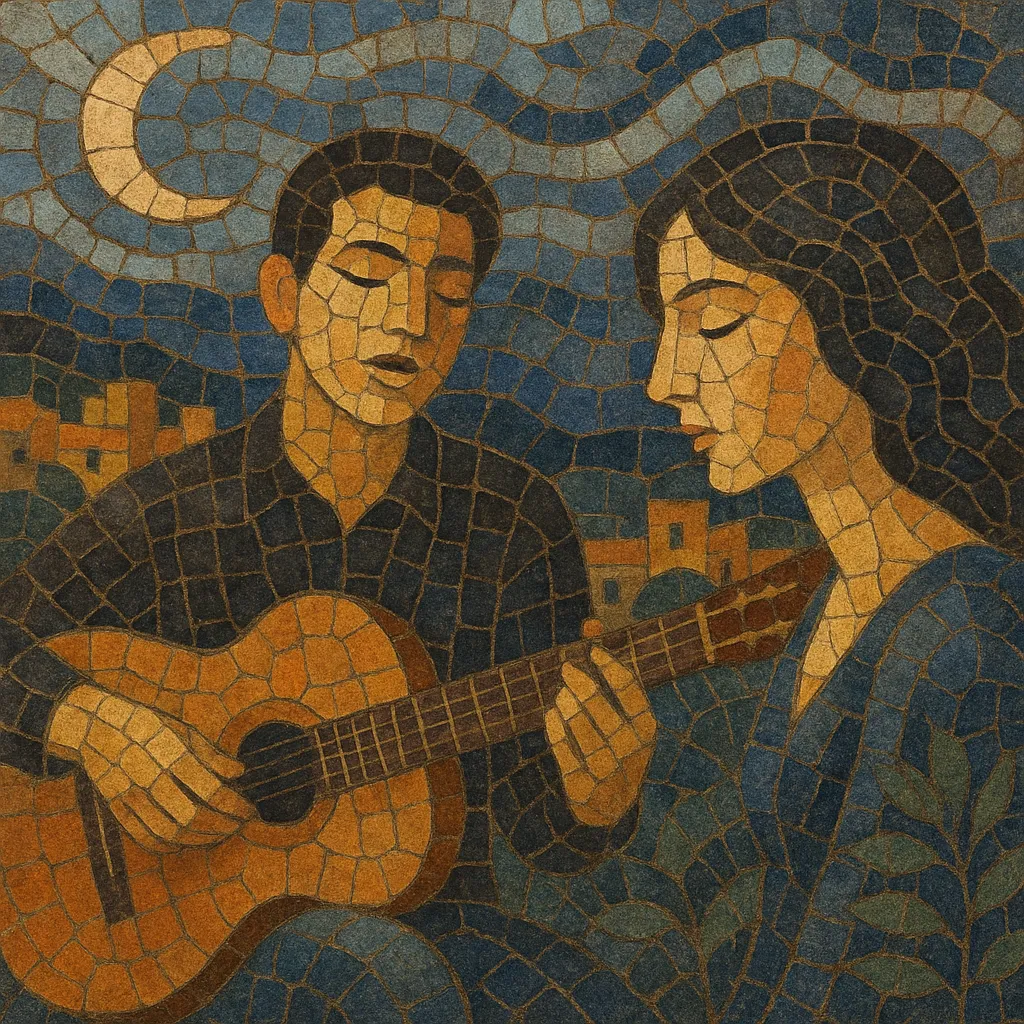Neo kyma (Greek: Νέο Κύμα, literally "new wave") is a Greek song movement of the 1960s that blended the intimacy of French chanson with the poetic, art-song sensibility of Greek éntechno. It flourished in small Athenian boîtes (club-cafés) in Plaka, where singers performed with just a guitar or sparse ensembles.
Musically, it favors soft, close-miked vocals, nylon‑string guitar, delicate piano, and light rhythm, often borrowing bossa nova and light jazz harmonies. Lyrically it is introspective and poetic—concerned with love, summer melancholy, city life, and youth—delivered with understated warmth and subtle drama.
Neo kyma emerged in Athens in the early–mid 1960s as a quieter, more intimate alternative to the dominant laïko and pop trends. After time in Paris, composer Giannis Spanos brought back the aesthetics of French chanson and merged them with the Greek art-song (éntechno) tradition and a light bossa nova/jazz palette. Small boîtes in the Plaka district—such as Apanemia and Les Hespérides—became the scene’s crucible, cultivating a listening culture centered on poetry, subtle vocals, and acoustic accompaniment.
By the later 1960s, the style had a recognizable sound: nylon‑string guitar, gentle piano, brush percussion, and hushed, confessional singing. Repertoires highlighted new Greek poetry and reflective, image‑rich lyrics. Artists like Arleta, Keti Chomata, Popi Asteriadi, Giorgos Zographos, and Kostas Hatzis popularized the idiom, while composers and arrangers (notably Spanos, among others) defined its harmonic language.
During the Greek junta (1967–1974), the scene’s modest scale and poetic indirection allowed it to persist within club settings, even as larger stages were constrained. Its understated character and coded lyricism helped sustain an audience seeking contemplative expression rather than spectacle.
From the late 1970s onward, neo kyma’s core artists moved toward broader éntechno or folk‑pop contexts, and the boîtes culture gradually waned. However, the movement’s influence endured in Greek singer‑songwriting, intimate acoustic pop, and chamber‑like arrangements. Renewed interest through reissues and retrospectives (1990s–present) has framed neo kyma as a cornerstone of modern Greek lyrical songcraft and a touchstone for contemporary indie/folk‑leaning artists.


